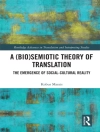This book explores the concept of disfluency in speech production, particularly as it occurs in the context of second language acquisition. Drawing on examples from learner speech at three levels (beginner, intermediate and advanced), the author argues that acquiring target language norms for performing disfluency is essential to an individual being recognized as fluent in a language by fellow-speakers. Starting with a survey of the psycholinguistic research in this area, he then applies a sociolinguistic lens to examine how a learner’s social and educational background impacts the types of disfluencies in their speech. This book will be of interest to readers in fields such as (applied) linguistics and second language acquisition, psychology and education.
Inhaltsverzeichnis
Chapter 1: Introduction.- Chapter 2: Silent Pauses.- Chapter 3: Filled Pauses.- Chapter 4: Prolongations.- Chapter 5:Repetitions.-Chapter 6:Self-corrections.- Chapter 7: False Starts.- Chapter 8: Conclusion.
Über den Autor
Simon Williams is a Senior Lecturer in the School of Media, Arts and Humanities, University of Sussex, UK. As an English language teacher, his work involves communicative activities with second language learners from a wide range of teaching and learning backgrounds, who respond in contrasting ways.












